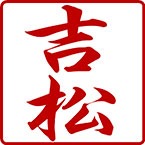For fine art reproduction purposes, there are just two major inkjet technologies. Both are known as drop-on-demand but differ significantly in design. Before we go there, let’s first examine basic inkjet technology.
Inkjet printers (ijp) work by spraying tiny droplets of ink through a nozzle onto media, aka substrate. By tiny, we are talking in terms of 3-5 picoliters. A picoliter is 1 trillionth or 1/1000000000000 of a liter. As you might imagine, a single picoliter by itself would barely be visible on a sheet of paper but, when combined with millions or billions of picoliter size dots, the result is a visible image.
IJPs combine these droplets in many ways including layers, side-by-side, overlap, random and other proprietary patterns as seen below to create a visible image. The dots are not arranged in neat rows and columns or some other discernible pattern.

Each white pad has nozzles for two colors. This head had 10 colors.

Not every nozzle fires every time so the dot pattern appears random.
Of course, there is a method to this seemingly random placement once the final image is visible. Also, no one except geeks views prints at this distance.
Now that you have an idea of the precision we’re dealing with, the monumental task of ejecting a 3 to 5 picoliter droplet at the exact moment to land at a precise location becomes clearer.
To add to the complexity, printers capable of creating fine art reproductions usually use between 6 to 10 inks. It’s not just one nozzle firing at a time. Depending on the printer’s native resolution, the head can have anywhere from ~3000 to ~6000 nozzles and fire up to 50,000 droplets per second. Finally, keep in mind, the paper is being advanced as the drops are deposited so it’s a moving target, if you will.
This is where the two major brands diverge. Canon uses a thermal process while Epson uses a piezoelectric mechanism. Whether one is better than the other is a matter of debate and preference.
Canon’s FINE (Full-photolithography Inkjet Nozzle Engineering) print heads use heat to propel ink droplets out of the nozzle. A chamber above the nozzle fills with ink. At the precise moment, a heating element above the chamber heats the ink causing it to rapidly expand and shoot out of the nozzle. Think about that for a moment. Six thousand chambers full of ink being heated to a precise temperature that causes the ink to expand and jet out of six thousand nozzles to place ink at precisely the desired location then refills with more ink to prepare for the next droplet. This cycle repeats as much as 50,000 times per second.
Epson TFP print heads, on the other hand, uses a proprietary piezoelectric system for ejecting ink at about the same rate. In Epson’s system a piezo element flexes when an electrical charge is applied. Based on this phenomenon, a tiny ink chamber is fitted with a piezo element. With the chamber full of ink, an electrical charge causes the piezo element to flex which, in turn, forces a droplet of ink out the nozzle. As the piezo element returns to its original state, it creates a vacuum that sucks more ink into the chamber.
Photos in this article are ©Keith Cooper, Northlight-Images.co.uk, a commercial photographer and printing expert based in Leicester, UK and used with permission.


Recent Comments